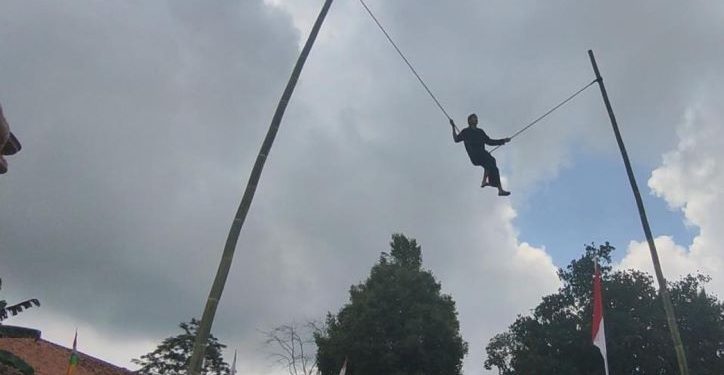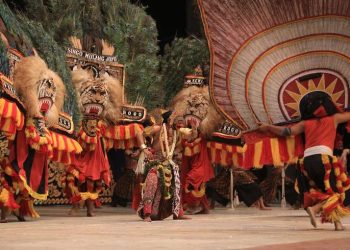Jakarta, Indonesia Sentinel — Lais, a centuries-old cultural tradition from West Java’s Priangan region, blends extreme acrobatics with the sounds of traditional Sundanese music. Originating in Garut, the centuries-old performance is believed to date back to the Dutch colonial era.
Considered a high-risk spectacle, Lais is performed without safety equipment as participants balancing on a rope stretched between two bamboo poles, each towering 10 to 13 meters high.
The performance features a single rope, known locally as dadung, about 9 meters long, tied between the bamboo poles A young male performer climbs the bamboo and moves gracefully across the rope, defying fear and gravity.
Therfore, before each show, the troupe often performs a ritual led by community elders to pray for safety and a smooth performance.
The act is accompanied by a traditional music ensemble, typically made up of nine to 15 members. According to the Garut Department of Culture and Tourism, the Lais performance is accompanied by the rhythmic beat of dogdog drums, trumpets, kendang, and kempul gongs.
The traditon was also performed along with humorous dialogue delivered by a bodor, or comedian who interact with the rope performer.
Despite modern entertainment’s rise, Lais remains alive and sought after for weddings, festivals, and community celebrations. In some events, the Lais act is paired with the sisingaan tradition, a symbolic lion parade where local leaders ride a carved lion effigy through the crowd.
Read Also:
Bukit Barisan: Mountain Range in Sumatra Guarded by the Mysterious Orang Bunian
A study published in the Regeneration of Lais Art Acquisition journal by Padjadjaran University notes that the name “Lais” originates from Laisan, a coconut tree climber from Kampung Nangka Pait, Garut.
His exceptional climbing skills later evolved into a form of performance art after being adapted by local cultural figures. Since then, Lais has transformed into a full-fledged art performance, often showcased at major public events.
Despite its high risks, the Lais tradition continues to be preserved as part of Sundanese cultural identity. The performers, typically young boys, move nimbly along a rope high above the ground, displaying fearless agility and inherited skills passed down through generations.
Lais is not only a thrilling spectacle but also a testament to the resilience of traditional art in the face of modernization.
(Raidi/Agung)























